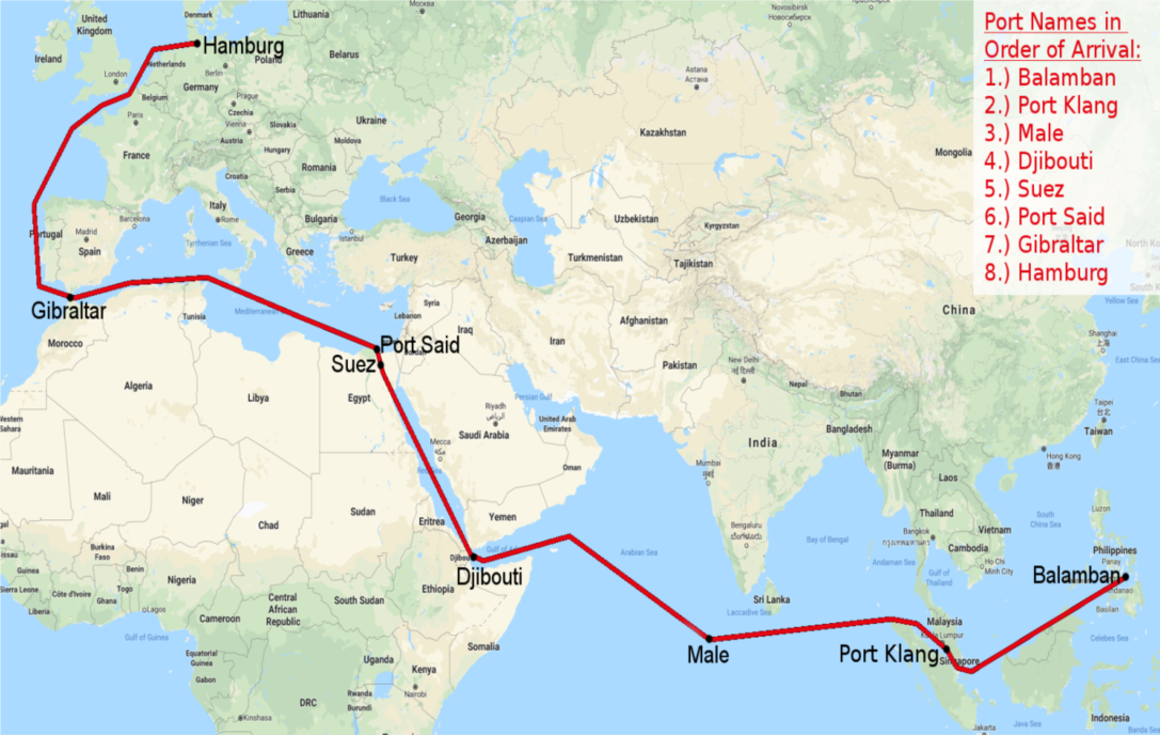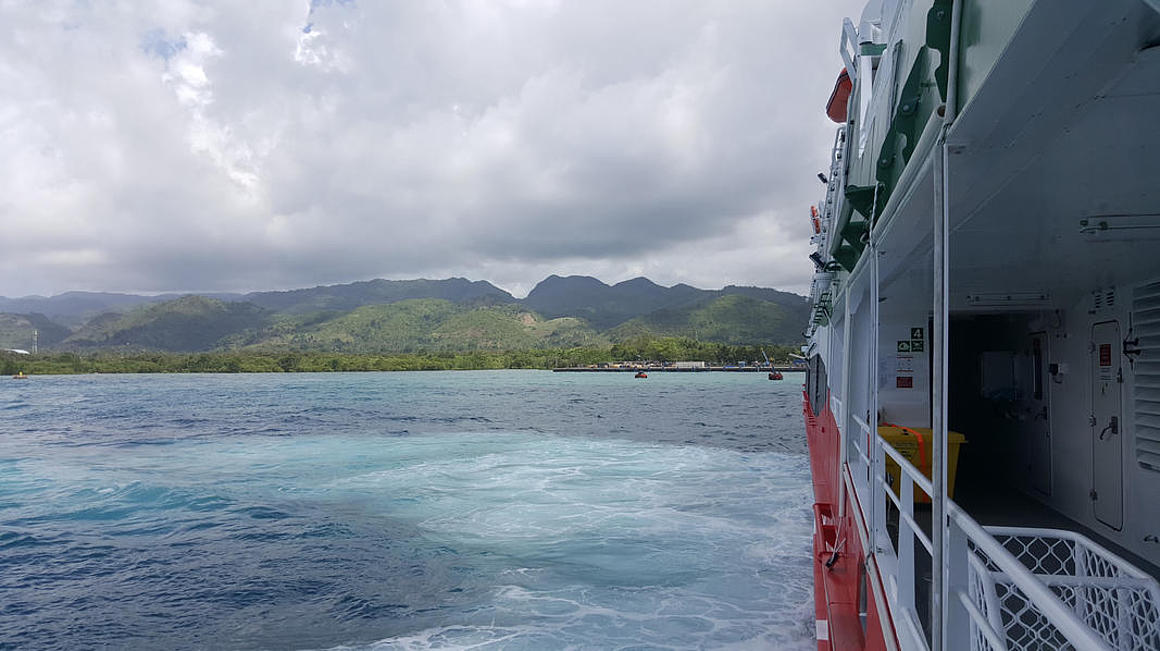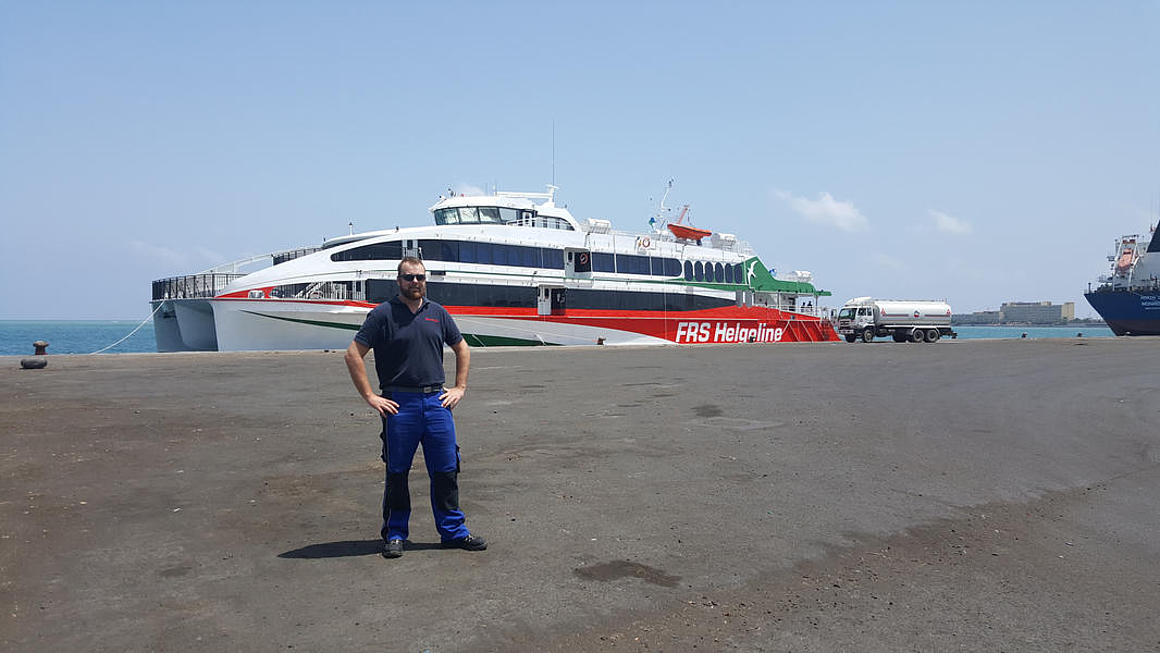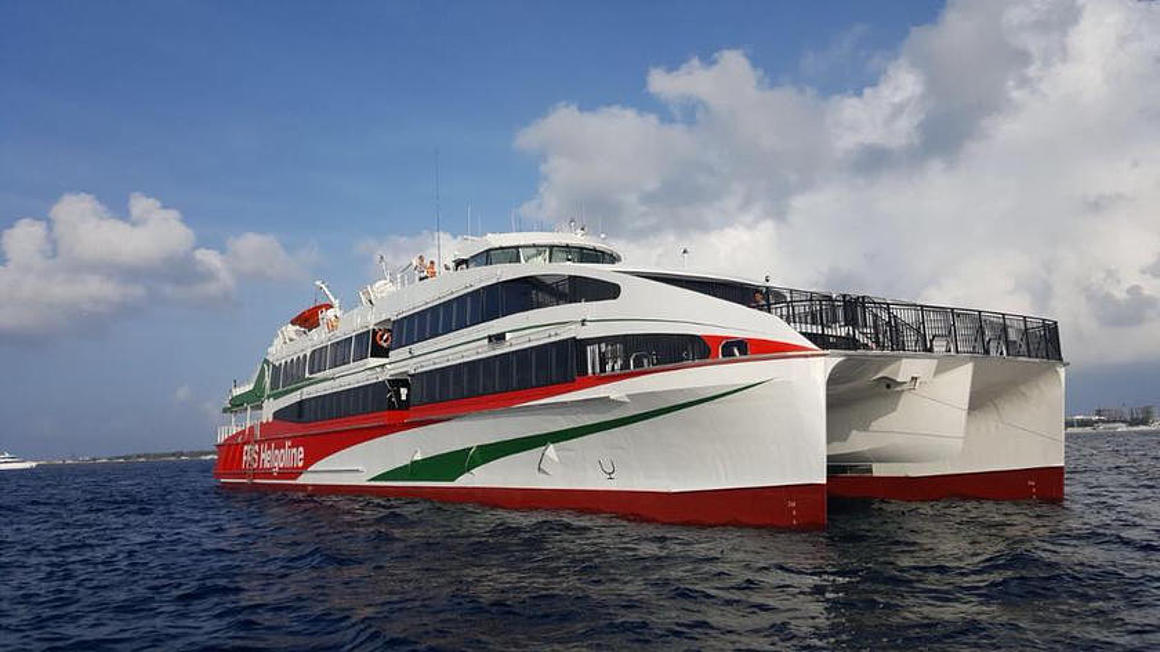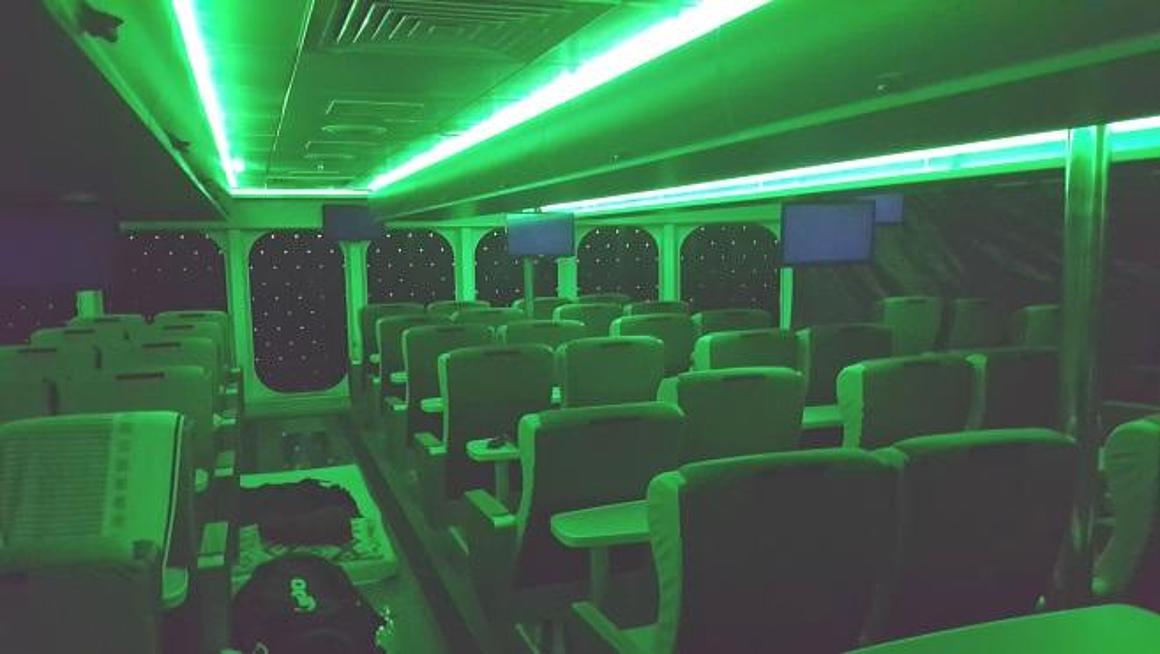As the barge came into view the next day, we became hopeful to be able to continue our journey soon. In spite of best weather conditions, the barge didn’t seem to be able to come alongside smoothly and there was an unwanted contact between the bulwark of the bunker barge and the superstructure of the new catamaran. The captain of the bunker barge was clearly uncomfortable when he came aboard to sign the damage reports. He seemed very aware of team "Con Air" in their orange coveralls. However, the barge fortunately did have the proper connection to the fuel supply, so that we were able to continue our journey towards Port Galle in Sri Lanka with 52.5m³ of additional fuel and the first two dents in the ship.
The stop in Sri Lanka was made to pick up the security team that was to accompany us through the high risk zone around the Horn of Africa. In addition to the two security officers joining us, weapons and over 500 rounds of ammunition were loaded. From Sri Lanka we continued to the Maldives, where I was surprised to encounter lively boat traffic. All anchorages were well filled, so we dropped anchor near a resort. This not only gave us a nice view, but also free Wi-Fi, which gave us one chance to get in touch with those that had stayed at home.
In the Maldives, the fuel and fresh water tanks were filled and on 16th of March 2018 at midnight (UTC + 5) with a total of 103 m³ of fuel and 10.5 m³ of fresh water, we headed towards Djibouti on the Horn of Africa. A distance of 2000 nautical miles laid before us, which among other things led us through one of the most dangerous stretches of sea in the world, the Gulf of Aden. After leaving the waters around the Maldives, preparations for the passage through the high risk zone were made. Fire hoses were attached to the railing to deter piracy. A refuge was set up and stocked with provisions and drinking water. This panic room, also known as the "Citadel", serves as a hiding place as soon as a pirate attack can no longer be averted. But an orderly escape must be well planned and all scenarios where discussed. A little tension on board was unavoidable of course, a high-speed catamaran has the advantage that it is much faster than other ships, but everyone on board was aware that a small-caliber rifle would be enough to shoot holes in the outer aluminum hull.
Shortly before reaching the high risk zone, another safety drill was scheduled. Scenario: “MAN OVER BOARD”. To make the training as realistic as possible, the rescue boat was deployed and everyone was allowed to play the role of going overboard. The water temperature of the Indian Ocean was 27 ° C and the safety drill accepted gladly. Another plus was that such a drill strengthens the camaraderie, because in the next few hours we had to function well as a crew. Around 16:00 (UTC +4) the rescue boat was back on board. After dinner, all the lights on the main deck were extinguished to stay as unnoticed as possible.
The bridge crew was doubled and the two armed security officers took turns with the watch around the clock. The weather was kind to us, north-easterly winds at 3 Bft. and waves with a height of 0.5 m. Shortly after dark, after reaching the high risk zone, we passed an unlit vessel close by, possibly a fisherman or Somali pirates. We didn’t want to turn around to check. We continued our journey and reached Djibouti on the morning of the 20th of March 2018. The MARSEC was raised to level 2 "Increased risk". The gangway was guarded so no one could sneak on board. 67.7m³ fuel was bunkered, this time not with the help of a bunker barge but by truck on land.
